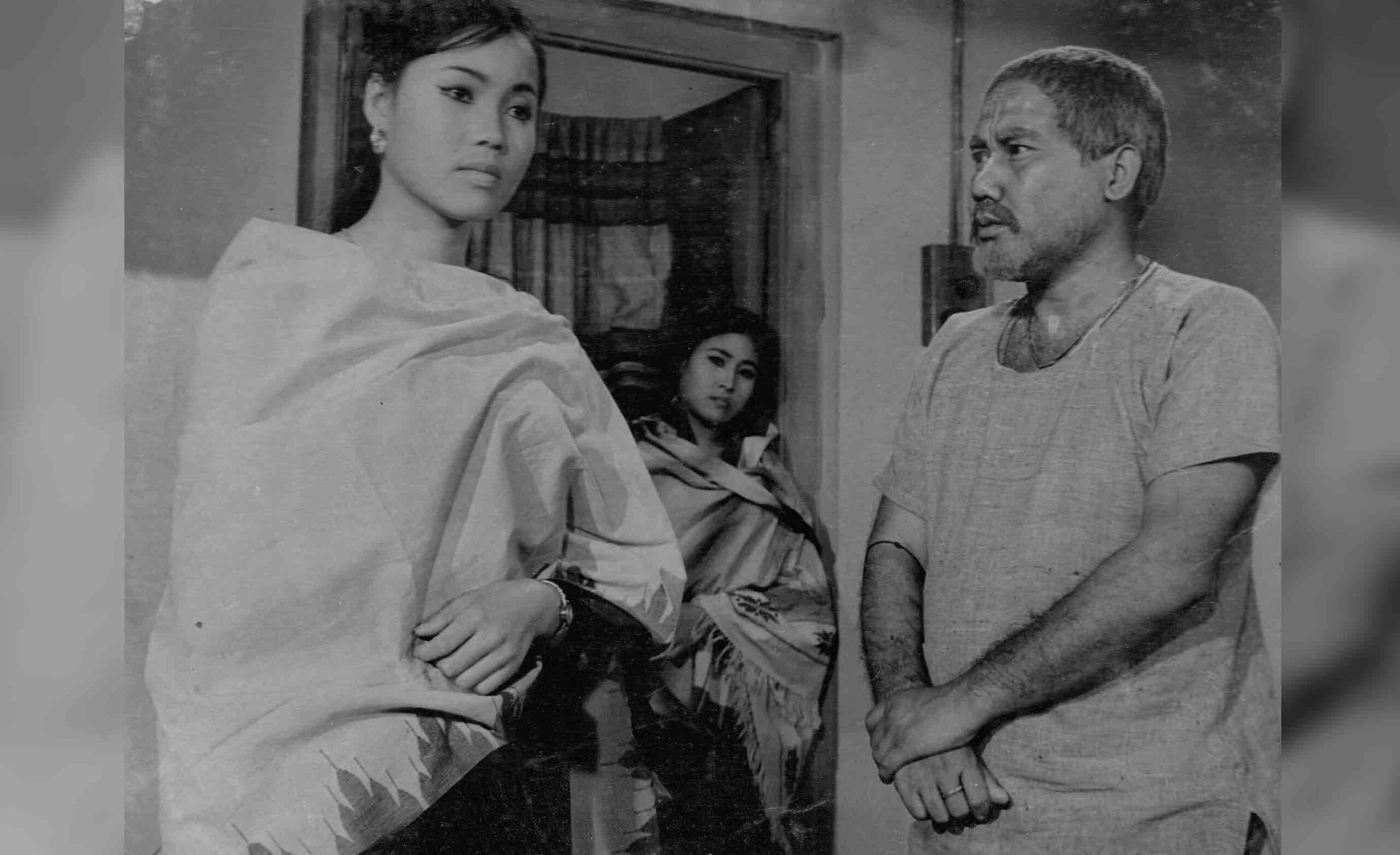The inclusion of Manipuri films into the Bachelor of Arts (Manipuri) curriculum at Rabindranath Tagore University, Hojai, marks a watershed moment in academic discourse, reflecting a profound recognition of Manipuri cinema not only as cultural artifacts but as an invaluable pedagogical tool. This visionary initiative signals more than just cultural preservation; it represents an intellectual pursuit aimed at transmitting the aesthetic, cultural, and historical significance embedded within Manipuri films to future generations. Assam’s progressive step in incorporating Manipuri cinema into its university curriculum is undoubtedly commendable. Yet, it raises a crucial question: why hasn’t Manipur itself, with its rich cinematic heritage, undertaken a similar initiative to institutionalize its own filmic legacy in its academic frameworks?
This far-sighted decision to integrate Manipuri films into an academic syllabus extends beyond the borders of Assam, underscoring the need for Manipur’s educational institutions to follow suit. Starting in the 2024–2025 academic year, students in their fifth semester will engage in a deep and intellectually stimulating exploration of Manipuri cinema through three carefully curated units. These units cover the historical development, current status, and sociocultural importance of Manipuri films, documentaries, and short films, with a special focus on two seminal works: Matamgi Manipur and Sanabi. This integration not only enriches Assam’s academic landscape but also serves as a call to action for Manipur itself to accord similar importance to its own cinematic heritage.
Cinema, as an art form and medium of mass communication, exerts a powerful influence on shaping societal consciousness. American filmmaker Martin Scorsese’s remark, “Cinema is a matter of what’s in the frame and what’s out,” perfectly encapsulates the layers of meaning embedded in films. The inclusion of Manipuri cinema in academic curricula will cultivate a critical awareness among students, enabling them to engage with the ideologies and narratives found in films. Integrating Manipuri film studies into undergraduate and postgraduate courses at Manipur University, its affiliated colleges, and institutions under Dhanamanjuri University would significantly elevate the importance of film as an academic discipline and have a profound impact on cultural and intellectual engagement with cinema. Manipuri cinema, with its deep cultural richness and evocative storytelling, deserves to be explored not just as an art form but as a crucial tool for preserving and disseminating Manipuri identity. This examination should be woven into the intellectual fabric of Manipur’s academic discourse, where it can stimulate both cultural awareness and academic engagement.
The origins of Manipuri cinema trace back to 1972, with the release of Matamgi Manipur, a pioneering film that laid the groundwork for a burgeoning Manipuri cinematic tradition. However, a pertinent question arises: Has this legacy been sufficiently explored through scholarly inquiry to sustain its academic preservation? Works like Bobby Wahengbam’s Matamgi Manipur: The First Manipuri Feature Film, which won the Golden Lotus Award for Best Book on Cinema at the 65th National Film Awards, have made important contributions. Yet, the body of scholarly literature on Manipuri cinema remains scant. Notable figures such as R.K. Bidur, Meghachandra Kongbam, and Aribam Syam Sharma have made invaluable contributions to the field, but there remains an urgent need for further academic inquiry to capture the full depth and significance of Manipuri cinema.
Manipuri cinema is not just a means of entertainment; it serves as a mirror, reflecting the socio-cultural and historical nuances of the region. Films like Aribam Syam Sharma’s Imagi Ningthem (1981) not only placed Manipuri cinema on the global stage but also garnered prestigious international recognition, such as the Grand Prix at the Nantes Film Festival in France. In a moment of global recognition, Imagi Ningthem was recently designated a “World Classic” at the 2023 Cannes Film Festival, making it the only Indian film selected that year. This highlights the global resonance of Manipuri cinema, reaffirming its profound cultural and emotional depth. These accomplishments underline the cultural specificity and emotional richness of Manipuri films, which demand academic inquiry and preservation.
Incorporating such films into academic curricula will give students the opportunity to delve deeper into their cultural identities, language, and traditions—an essential task in an era when globalization threatens to erode regional uniqueness. Beyond their narrative content, the cinematography, costume design, and aesthetic choices found in Manipuri films offer rich insights into the cultural and historical contexts from which they emerge. This reflects a dynamic interplay between tradition and modernity, a tension that regional cinema must navigate as it strives to protect linguistic and cultural diversity.
Moreover, Manipuri cinema has historically provided a platform for confronting pressing social and political issues in the region, from insurgency to human rights concerns. Films like Ishanou (1990), directed by Aribam Syam Sharma, critically engage with the spiritual traditions of the Meitei community while addressing the evolving roles of women in society. Films like these offer essential insights into the complexities of Manipuri society, giving students a chance to engage deeply with social issues. By studying these films, students cultivate critical thinking skills, empathy, and social awareness, all while fostering a sense of cultural pride.
Film education, however, goes beyond mere passive viewing. It requires rigorous intellectual engagement, encouraging students to appreciate diverse art forms while deepening their understanding of their own cultural heritage. In a place like Manipur, where the arts have historically played a significant role in shaping society, the introduction of formal film studies could be transformative. It could inspire a new generation that is culturally literate and globally conscious. Naturally, such a curriculum should not be limited to Manipuri films alone; exposure to cinema from across India and the world would foster a cosmopolitan ethos among students, helping them understand the interconnectedness of cultures.
Unfortunately, in Manipur, cinema is often relegated to mere entertainment, and during times of social unrest, public screenings and film production are frequently suspended, which diminishes the cultural status of the film industry. While other professions are respected, the film industry in Manipur is often overlooked, despite its potential to serve as both a cultural and economic driver.
Manipur’s broader educational system is fraught with challenges. Manipur University, the state’s leading institution, failed to rank among the top 100 universities in the 2024 National Institutional Ranking Framework (NIRF), while newly established private universities have yet to meet even national standards. This educational crisis further underscores the need for reforms, including the formalization of film studies in university curricula. Manipuri cinema, if integrated into the academic structure, could contribute significantly to revitalizing the state’s educational and cultural landscape.
Government intervention is essential to nurture Manipur’s film industry. Financial grants for high-quality films, infrastructure improvements like modern cinema halls, and investment in educational programs will provide the necessary support for the industry to thrive. Filmmakers should be encouraged to produce works that not only cater to commercial audiences but also withstand critical scrutiny at national and international levels.
While a cadre of independent filmmakers continues to make strides without significant government support, the legislative apparatus must align its priorities to channel resources toward cinema. If nurtured with care, Manipuri cinema can continue to represent the region’s unique cultural identity on a global stage while enriching the intellectual and artistic life of its people. Just as Assam has boldly embraced film education, it is time for Manipur to do the same, recognizing the transformative power of cinema in shaping society, preserving culture, and inspiring future generations.
The power of cinema, as seen in the works of German filmmakers like Leni Riefenstahl, who used films to shape political ideologies of Adolf Hitler’s Nazi regime, reminds us of the profound influence this medium can wield over public perception. While her work is controversial, it demonstrates how cinema, when used responsibly, can serve as a force for social change. Manipuri cinema holds this potential—if integrated into academic study at various levels and nurtured by the government, it can catalyze both cultural preservation and societal transformation.












